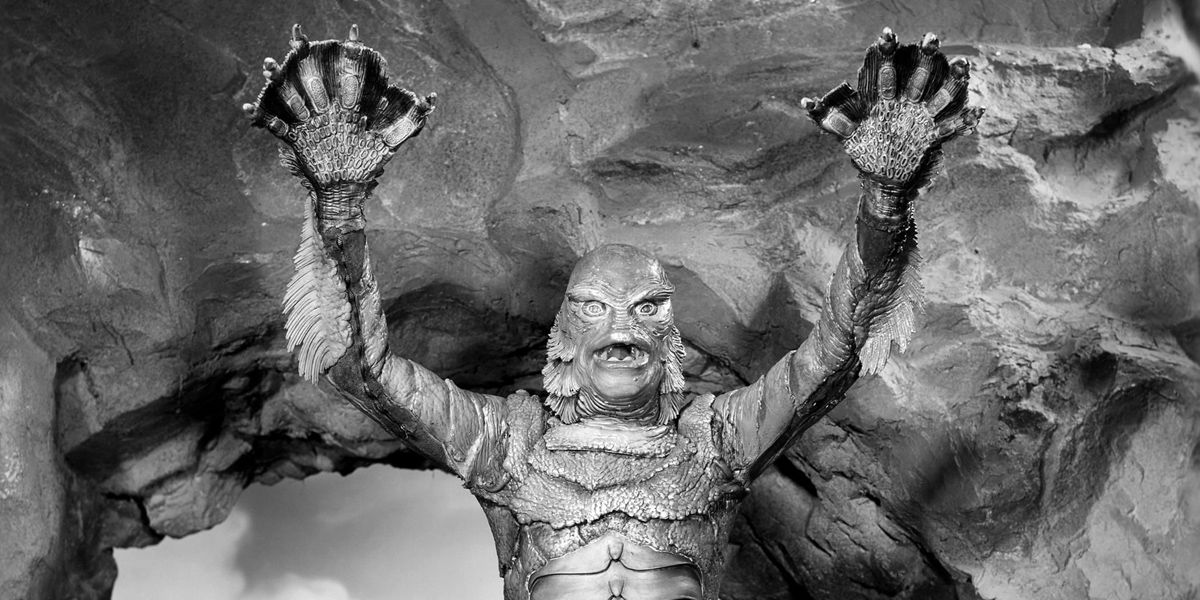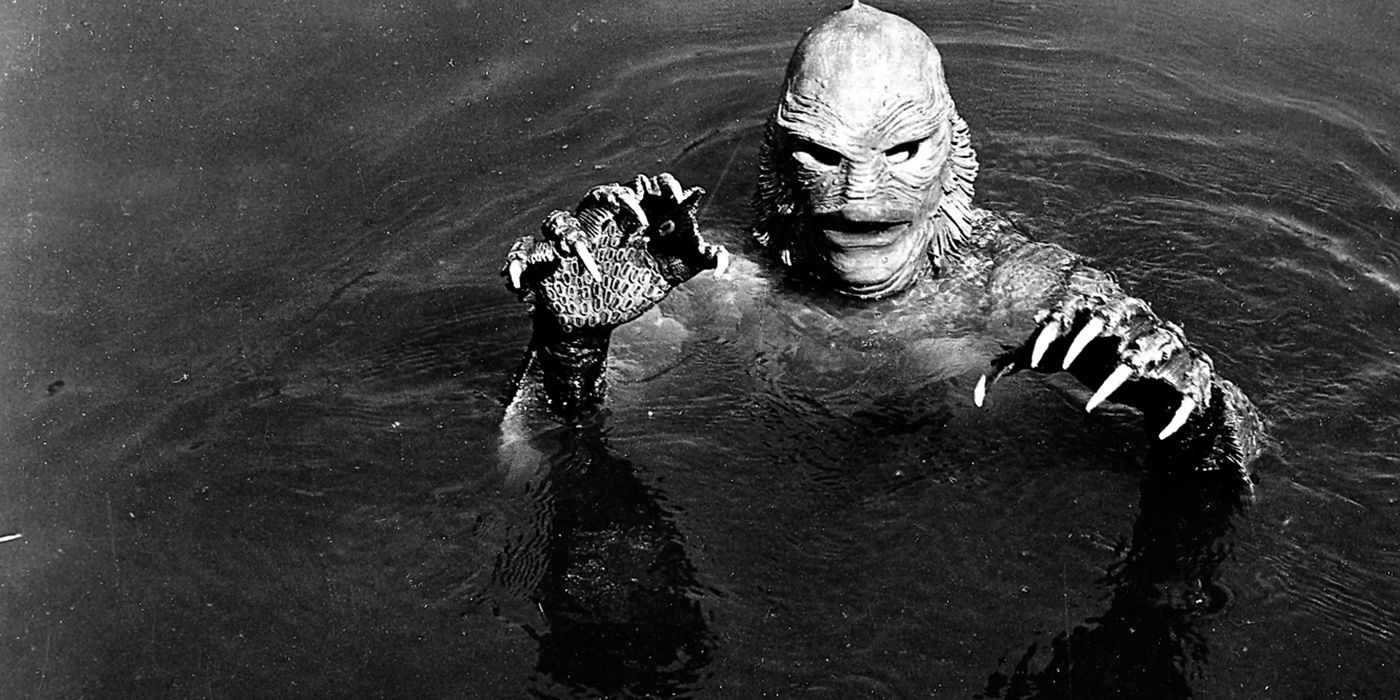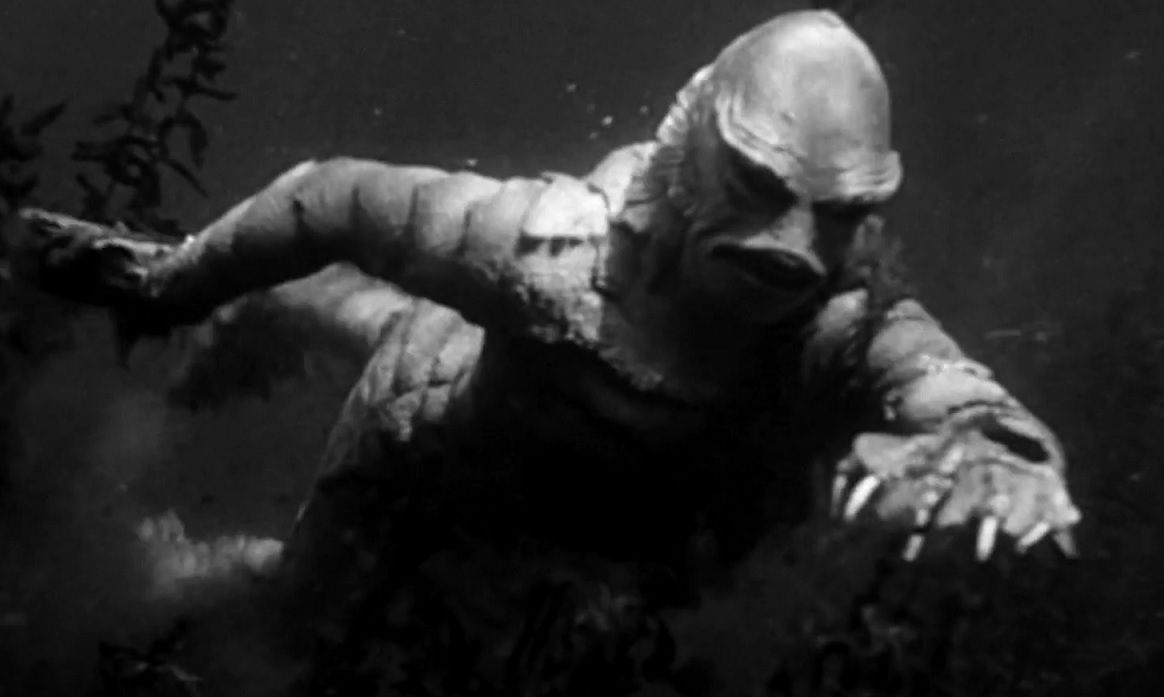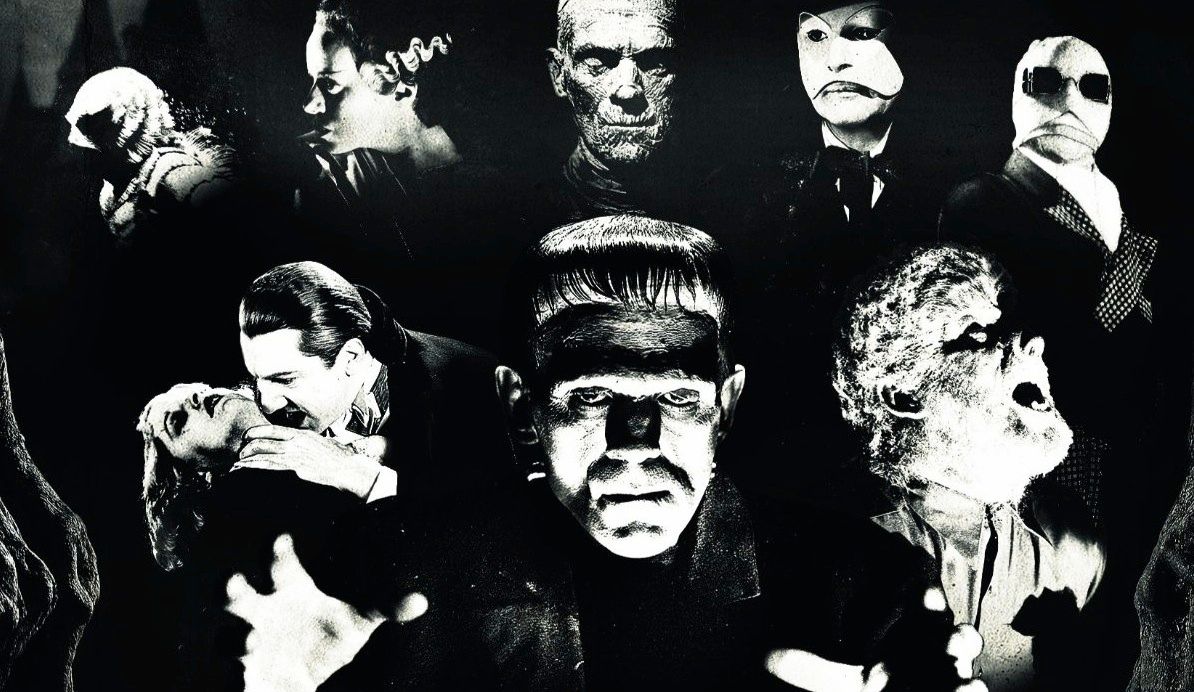Universal Studios has introduced a whole host of iconic monsters as part its shared horror cinematic universe. The last of these was the Creature from the Black Lagoon, a monstrous amphibian from a forgotten part of the world that preyed on hapless explorers and scientists that crossed its path over several films.
Here is the history of the eponymous Gill-Man, his various cinematic appearances and what makes him special in comparison to the other Universal Monsters.
Origins
While having dinner with Mexican cinematographer Gabriel Figueroa during the production of Citizen Kane, producer William Alland learned of Mexican tales of half-human/half-fish that lived within the Amazon River. Inspired, Alland had writers develop his notes on the local myths into a full treatment and script over the subsequent decade. Director Jack Arnold helmed the 1954 original film, with the monster designed by Disney animator Milicent Patrick.
Creature from the Black Lagoon follows an expedition deep into the Brazilian Amazon after a fossilized webbed hand suggests a link between the evolution of humanity and aquatic creatures in the region. Discovering the titular Black Lagoon, a tropical paradise untouched by civilization, the expedition is stalked by the Gill-Man, who tears several of the group apart. After blocking the expedition's escape from the lagoon by blocking off the river with logs, the Gill-Man abducts a young woman in the group named Kay before she is rescued and the monster is gunned down.
The Sequels
Released as part of the first wave of 3D films, Creature from the Black Lagoon was a critical and commercial success. This led Universal to commission two direct sequels. The 1954 film Revenge of the Creature featured Arnold's return as director. Clint Eastwood also made his cinematic debut in a small, uncredited role. The sequel revealed Gill-Man had survived but was captured and held for study and observation in Florida. Breaking free for a new rampage, the monster was shot and killed apparently by the authorities at the film's end.
Universal then greenlit The Creature Walks Among Us, the only installment of the trilogy that wasn't filmed in 3D or directed by Arnold, who instead suggested his assistant director John Sherwood for the task. In the 1956 film, the Gill-Man has recovered and is brought back to civilization, where it is discovered he is slowly adapting and evolving to the surface world by shedding his gills. Falsely blamed for a murder, the Gill-Man goes on a new rampage before escaping to the ocean where he apparently drowns due to his recently lost gills.
The Legacy
Many of the Universal Monsters represent either dangers from the old world (Dracula and the Mummy) or the folly of reckless science experiments (Frankenstein's monster and the Invisible Man). The Creature from the Black Lagoon manages to blend the two tropes into a single, iconic monster across three standalone films. A group of scientists not respecting local culture and the sanctity of nature stumble across a Lovecraftian creature straight out of The Shadow Over Innsmouth.
There is also a sense of doomed romance with the Gill-Man, who's always attracted to a woman but denied because of interspecies limitations and his own monstrous appearance. This would deeply inspire filmmaker Guillermo Del Toro to craft the Academy Award-winning The Shape of Water, with a similar monster successfully finding romantic love with a human woman.
The Universal Monsters are largely social pariahs and misfits, it's why the Wolf Man and Frankenstein's monster are constantly isolated and on the run. The Gill-Man is one of the clearest examples of this; even after adapting to humanity in his final film, the character is still viewed by the general public as a monster, unable to fit into either civilization or his aquatic home in the most tragic moment for any of the Universal Monsters.




